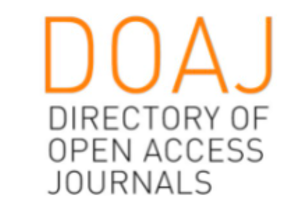DEMAND DRIVERS OF FEMALE LABOR FORCE PARTICIPATION: EVIDENCE FROM SELECTED AFRICAN COUNTRIES
DOI:
https://doi.org/10.2478/eoik-2019-0007Keywords:
Labor, Demand, Female Labor, ParticipationAbstract
This study investigates the demand drivers of female labor participation in a panel of twenty (20) selected African countries across five sub-regional groupings (West Africa, East Africa, North Africa, Central Africa and South Africa), over the period 1990-2015. The study sourced data from World Bank Data Bank. Poverty and gender inequality in employment were used and measured respectively by life expectancy at birth and gender ratio in labor participation. Other variables included are wage rates, female marginal labor productivity and household income. Autoregressive Distributive Lags (ARDL) procedure of dynamic panel model was used. The result from the Dynamic Fixed Effect (DFE) revealed that female marginal productivity of labor and gender inequality in employment have a significant positive impact on demand for female labor in the long run, however female marginal productivity was found negative in the short run. It is therefore important that, in order to bridge the gender gap in employment, government should ensure gender sensitive policies and remove all forms of institutional barriers to female labor demand. Efforts should also be made to improve female productivity through training, literacy and household food security. In order for female demand to meet desired response, adequate support services and provisions that can entice female to work outside home should be provided.
References
Population Reference Bureau, World Population Data Sheet: With a special focus on women’s empowerment, (2015)
United Nations, World Population Prospects, key findings and advance tables, Department of Economics and Social Affairs, Population Divisions (2015). Retrieved from https://esa.un.org>publication>files
United Nations, Investing in Women and Girls: International Women’s Day 2008, United Nations Backgrounder, 2008. http://www.univienna.org/pdf/factsheets_women_2008_e.pdf.feb 2008
Ernst and Young, Women of Africa, A Powerful Untapped Economic Force for the Continent, 2011, retrieved from http://www.ey.com/Publication/vwLUAssets/Women of Africa/$FILE/Women% 20of%20Africa%20fnal.pdf
World Bank, In Times of Crisis, Women can be Agents of Change: Interview with Otaviano Canuto,Vice President and Head of the Poverty Reduction and Economic Management (PREM) Network,” PREM Newsletter: Gender Equality as Smart Economics, Fall 2009.
Sachs, G. Australia’s Hidden Resource: The Economic Case for Increasing Female Participation, Research Report, Goldman Sachs JB Were Investment Research, (2009)
Morikawa, Y. The opportunities and challenges for female labor force participation in Morocco, Global Economy and Development (Working Paper 86), Brookings (2015)
Mahapatra, S. Women participation in labor force. New Delhi, Rajat Publications, 2002, 46-54
Klassen, S. and Pieters, J. Push or Pull? Drivers of female Labor Force Participation during India’s Economic Boom, IZA Discussion Paper Series, 2012, (N0. 6395). Germany.
Bernal, R., and Cardenas, M. Determinants of labor demand in Colombia: 1976-1996. NBER working paper series, WP10077, 2003. http://www.nber.org/paper/
Plekutowska, A. Determinants of labor demand for immigrants in Poland. University of Bialystok, 2007 https://www.researchgate.net/publication/242251937
Rotaru, P. C. A regional Model for labor demand in Romania, Theoretical and Applied Economics, 8(585), 2013, 7-14
Maleszyk, P. The determinants of labor demand in the Lubelskie Voivodship, Barometer Regionalny, 2014,53-63.
Ibrahim, M. A. The determinants of private sector demand for employment in Egypt: 1990-2007, Advances in Management and Applied Economics, 3(1), 2013, 163-182. ISSN: 1792-7544,1792 5527(online). Sciencepress limited
Nguyen, K. T. Determinants of labor demand in the manufacturing sector: Does firm ownership matter? Crawford School of Public Policy, 2013
Adam, A., and Moutos, T. Industry level labor elasticities across Euro Zone: will there be any gain after the pain of internal devaluation. Economics Analysis and Research Department Special Studies Division, 2014, Working Paper ISSN 1109 6691
Samuelson, P. A. Tale of Two Macroeconomics, Japan and the World Economy, Elsevier, 15(3), 2003, 361-363
Statistical, Economics and Social Research and Training for Islamic Countries (2007) http://www.sesrtcic.org/stat_database.php
National Gender Policy, Federal Republic of Nigeria Situation Analysis / Framework. The Federal Ministry of Women Affairs and Social Development, 2009, Abuja.
Danish Trade Union Council, Malawi Labor Market Profile. Danish Trade Union Council for International Development and Co-operation, 2014.
African Development Bank, Gender Profile of the Union of Comoros. Africa Development Fund, Abidjan, Cote D’ Ivoire, 2009
D. N. GUJARATI, Basic Econometric, (4th Ed.) (The McGraw-Hill Companies. NewYork, 2004).
Engel, R. F., and Granger, C. W. J. Cointegration and error correction: Representation, estimation and testing, Econometrica, 55(2), 1987, 251-276
World Bank, World Development Report 2012: Gender. The World Bank, Washington, DC, 2011.
Klasen, S. and Lamanna, F. The impact of gender inequality in education and employment on economic growth: New evidence for a panel of countries, Feminist Economics, 15(3), 2009, 91-132
Revenga, A. and Shetty, S. Empowering women is smart economics, Finance and Development, 49(1), 2012, 40-43
Downloads
Published
How to Cite
Issue
Section
License
Copyright (c) 2019 ECONOMICS - Innovative and Economic Research

This work is licensed under a Creative Commons Attribution-NonCommercial-NoDerivatives 4.0 International License.




















